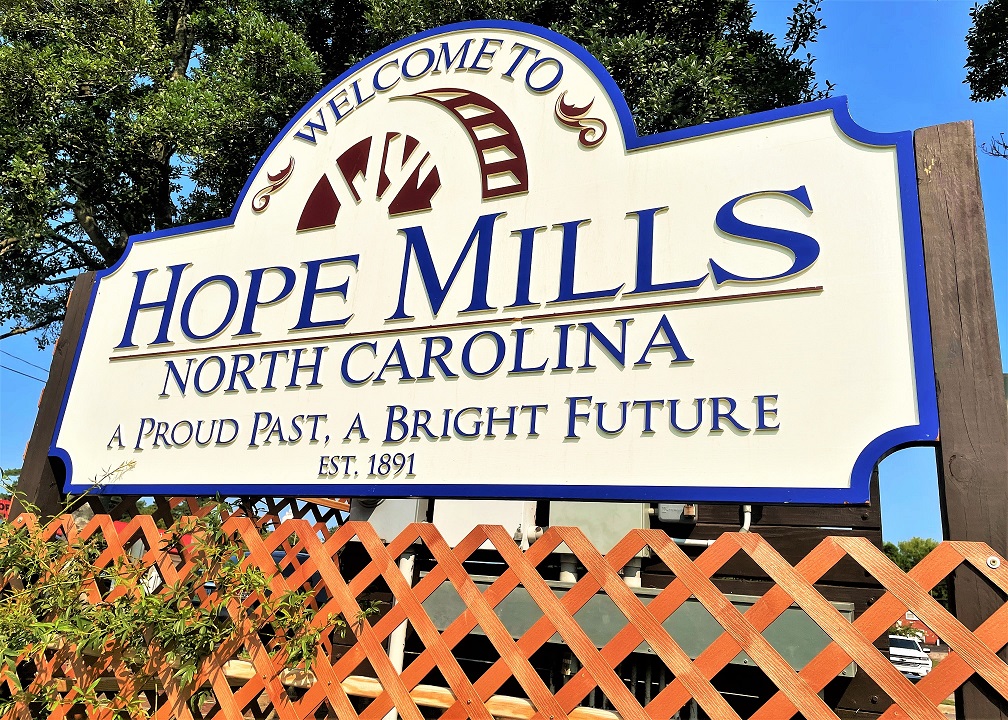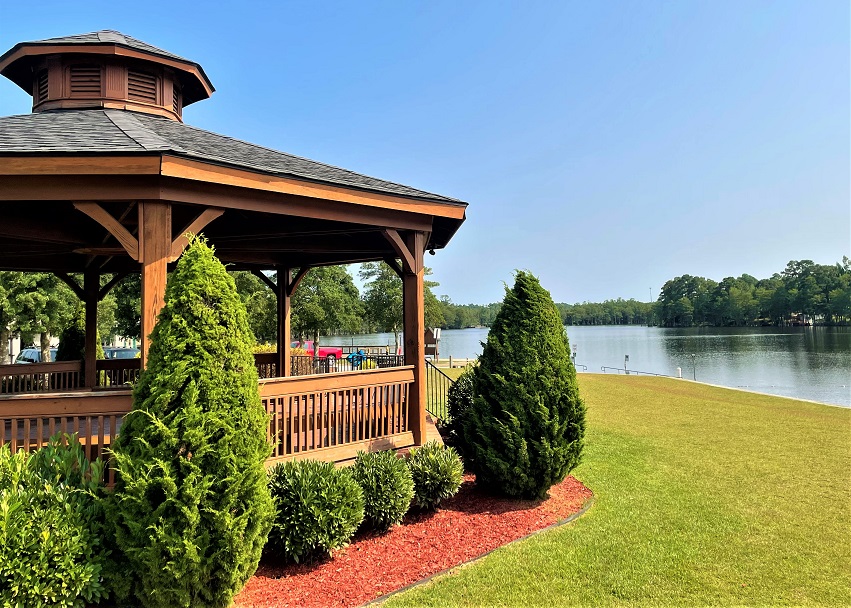
Hope Mills booming again; Outer Loop, I-95 industrial corridor driving growth in Hope Mills
By Scott Nunn, posted Aug 18, 2021 on BizFayetteville.com

If Hope Mills’ past was powered by the Cape Fear River, its future is driven by a river of asphalt.
By harnessing swift-moving creeks to power mills, the area once known as Little Rockfish Village became a popular place for the production of timber, grain and even pottery. When Hope Mills Dam was completed in 1839, cotton became king, and the nearby Cape Fear River served as a natural highway to the Port of Wilmington. From there the highly-in-demand commodity was shipped all over the world.
Today the Hope Mills area is being transformed by Interstates 95 and 295’s western Outer Loop. The town has extended its footprint to the southeast, where a busy industrial and logistics corridor has emerged in and around a non-contiguous, “satellite” annexation area.
To the west, the limited-access I-295 Outer Loop will give commuters a much-quicker route to Fort Bragg and Fayetteville. With the real estate market in the area already tight, builders are wasting no time planning new homes near the Western Outer Loop.

“There's a lot of activity going on in all directions,” Scott W. Meszaros, Hope Mills town manager, told the Greater Fayetteville Business Journal. “And I think the reason for that is the 295 collectors coming through. And when that's in, it's only three exits and it says, boom, right into the base.”
Meszaros is seeing a lot of speculative land development.
“It's just pretty constant housing developments right now. Obviously, they see the road coming through and it’s under construction.”
The uptick in development is keeping town officials busy.
“We have a lot of interest from developers,” Meszaros said. “It seems like every week we're meeting with new people, and almost monthly we get like five to 10 new notifications of submittals on things like restaurants.”
Meszaros credits the growth to several factors. For one, the highway improvements, which will help commuters get to work, and allow businesses to move freight. Fayetteville Regional Airport also is in the area.
In an illustration of just how hot the housing market is, Meszaros said that some developers who initially planned commercial projects have changed them to housing. And even with a tight real estate market, houses in the Hope Mills area remain more affordable than in many parts of the nation, he said.
And Meszaros said he believes that the area’s reputation for good schools and plentiful recreation opportunities score big points for quality of life.
“It still feels like a homey kind of small town, even though it is urbanizing,” he said.
Casey Ferris, president of the Hope Mills Area Chamber of Commerce, agrees with Meszaro.
“It's a good alternative to the hustle and bustle that is Fayetteville, said Ferris, marketing director for U-TECK, a locally owned supplier and manufacturer of fiber optic equipment. “It's close enough to benefit from (that) hustle and bustle ... but it still gives you a very nice hometown feel.”
Part of that hometown feel comes from having an actual downtown. Although much work remains, the town and merchants are focusing on revitalizing the Trade Street area.
Revitalizing older commercial buildings, however, can present unique challenges, Ferris said. For example, zoning, fire-safety and other regulations can limit the number of people a building is allowed to occupy. She said it takes lots of homework before a business can open in some older buildings.
“We are working on the revitalization of Trade Street,” Ferris said. “That's what we kind of started with the farmer's market.”
The pandemic, of course, slowed things down.
“We didn't want to try and do too much and then have stuff get shut back down again and again,” Ferris said. “You know, just kind of treading water.”
“I think that we've got all the key factors in place ... for a really, really cool little downtown area,” she said. “We've got the lake and semi-historic buildings, right. We'll just call that Trade Street. We've got some restaurants, we've got some shops all in like a block of each other that we’re really trying to work.”
Recurring growing pains (cited by residents and businesses alike) is undoubtedly the traffic. Even with a handful of freeways already in place in the Fayetteville area, cross-town trips from various spots can take 45 minutes or even an hour, said Ferrris, whose husband commutes from Hope Mills to Raleigh for work.
Ongoing improvements on the east side of the Outer Loop and completion of the western side should go a long way toward helping, officials say. The NCDOT plans to complete the western side of the loop by 2025.

Copyright © 2025
Enhanced Media Management Inc. dba
Greater Fayetteville Business Journal
This story may be displayed, reformatted and printed for your personal, noncommercial use only and in
accordance with our Terms of Service located at https://bizfayetteville.com/useragreement.